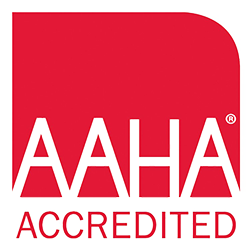Library
-
Dogs, like people, need to practice their social skills. Spending time with other dogs will help your dog hone his ability to read his friends’ body language and to communicate effectively. These skills decrease the development of dog related fear and aggression. Play groups in an organized or more relaxed setting are beneficial for both your growing puppy and adult dog. Canine and human socialization occur simultaneously and dog owners enjoy meeting new friends, too. Watching dogs play is a great way to reduce your stress level. Socializing should be pleasant for you and your dog, so find a comfortable group and setting and have fun!
-
Soft tissue sarcomas are a broad category of tumors that can develop over the chest, back, side, legs, and facial tissues of your pet. The clinical signs depend on where the tumor is located and the tissues that are affected. Often, pets have a noticeable mass that is growing in size. One of the biggest concerns with soft tissue sarcomas is their ability to invade the local surrounding tissues. The most commonly pursued treatment is surgery. Chemotherapy is not usually pursued as a primary treatment unless surgery or radiation are not options for your pet based on the tumor size or location.
-
There are lots of ways to find adoptable pets, and large or small, local or national, online resources and shelters have the same goal: match available pets with the most suitable homes. Social media has helped find homes for countless dogs and cats. Well-developed websites that are updated frequently and actively used by rescue groups and humane societies make shopping for a pet online a fruitful experience. Shelters are another great option if you want to see many pets at one time.
-
Canine grooming is important. Dogs should be kept clean, be brushed often, and get clipped as needed. If you want to do something more unique, like applying nail polish or hair dye, choosing a canine-approved product that is appropriately applied while the dog is monitored is highly recommended.
-
The two groups of spiders responsible for most medically significant spider bites include the widow spiders (Latrodectus spp., including the black widow spider) and the recluse spiders (Loxosceles spp., including the brown recluse). The clinical signs and treatment of black widow and brown recluse spider bites vary significantly due to differences in their venom.
-
Squamous cell carcinoma is a tumor of the cells that make up the contact or upper layer of the skin. UV light exposure has been described as a developmental factor in people, though it is still in question as to the role for dogs. Several breeds are known to be predisposed to this type of cancer. About 30% of dogs with the digital form of the disease will have evidence of spread. Regardless of the location, surgery is typically the treatment of choice, and staging is usually recommended prior to any surgery.
-
Staph (or staphylococcal) dermatitis is an inflammatory skin condition that the skin caused by a group of bacteria called Staphylococcus. Any disorder that causes itching or a change in the skin’s environment can create the ideal conditions to allow Staphylococcus to become a problem. This handout discusses Staphylococcus dermatitis in dogs, as well as a hypersensitivity (allergic) reaction to this bacteria. The clinical signs of these conditions, along with diagnosis, treatment, and prognosis, are outlined.
-
This handout discusses the use of corticosteroid (such as prednisone or dexamethasone) in the dog. Reasons for use as well as the common short-term and long-term side effects of these drugs are outlined, along with strategies to avoid these effects.
-
Sudden acquired retinal degeneration syndrome (SARDS) causes blindness in older dogs, most often females. The underlying cause of SARDS is unknown and there is no effective treatment for the condition. This handout explains the clinical signs observed in affected dogs, how the condition is diagnosed, and how to support a dog with SARDS.
-
Home care after surgery mainly involves the restriction of physical activity. Excessive physical activity often leads to injury or serious complications. Monitor the incision daily for signs of redness, swelling, discharge, or excessive licking, and never apply anything to the incision unless instructed to do so. To keep your dog from licking, your veterinarian can provide you with a protective collar or recovery suit. Your dog should gradually improve each day.


